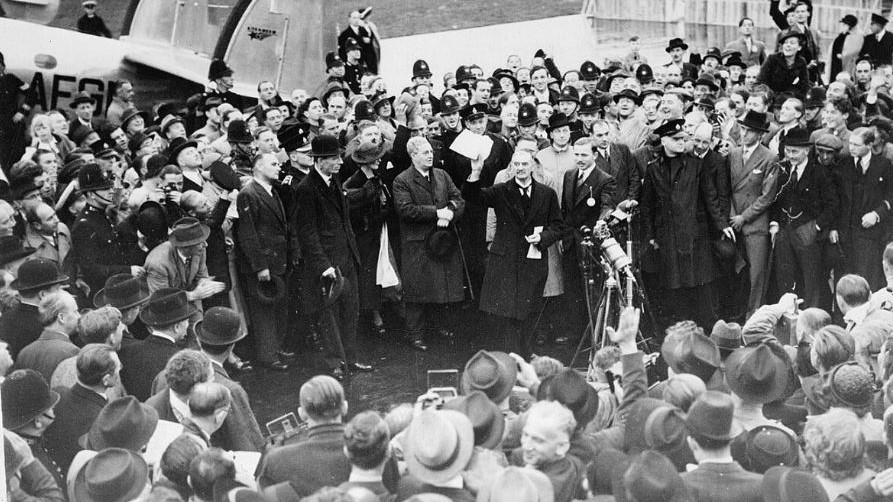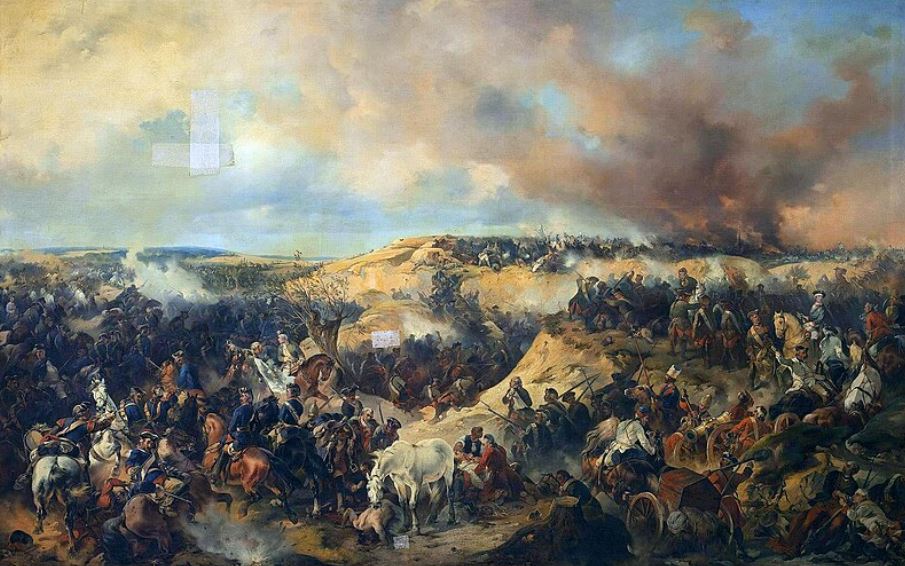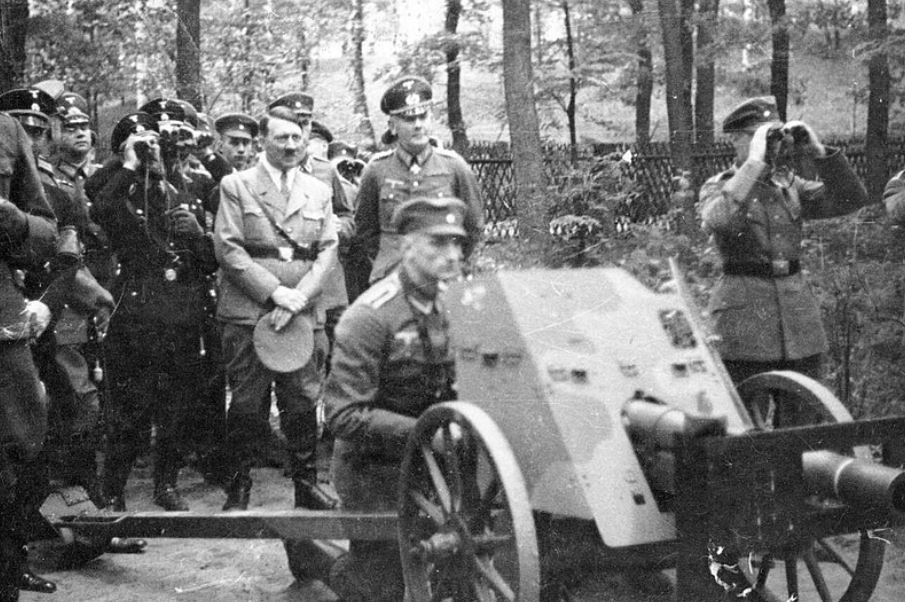What were German Special Forces called in World War 2? During World War 2, a distinct and enigmatic force emerges—Germany’s elite covert force, the Brandenburgers.
The Brandenburgers were renowned for their unparalleled skill in clandestine operations and unorthodox warfare.
This article provides a brief overview of the Brandenburgers and sheds light on their pivotal role in shaping key historical events.
1. The Brandenburgers Formation
The Influence of Captain Theodore Von Hippo

Major Theodor von Hippel was a German Army officer who played a key role in the formation and development of the Brandenburgers, a special forces unit of the German Wehrmacht during World War 2.
Germany’s Captain Theodore Von Hippo emerged as a stalwart advocate for unorthodox military strategies. His visionary approach reshaped the landscape of warfare and laid the foundation for the creation of Germany’s elite covert force—the Brandenburgers.
Hippel first proposed the idea of creating a special forces unit that could operate behind enemy lines in 1939. He approached the Reichswehr (German military) with his idea, but it was rejected. Hippel then approached Admiral Wilhelm Canaris, the head of the Abwehr (German military intelligence), who accepted Hippel’s idea.
Hippel’s plan called for the creation of small units of highly trained soldiers who could infiltrate enemy territory, conduct sabotage, and gather intelligence. These units would be fluent in foreign languages and would be experts in demolitions and other special operations techniques.
Hippel’s plan was approved and the Brandenburgers were formed in 1939.
Hippel played a key role in the training and organization of the Brandenburgers. He also led the Brandenburgers on a number of successful operations during the early years of the war.
However, Hippel’s influence over the Brandenburgers began to decline in 1941. Admiral Canaris began to take a more direct role in the Brandenburgers’ operations and Hippel was eventually sent to North Africa in 1943.
Despite Hippel’s declining influence, the Brandenburgers continued to be a significant part of the German war effort throughout the war.
2. The Brandenburgers’ Key Operations

As the Brandenburgers took their first steps into the theater of war, their impact reverberated through key historical events. Some of their key operations include:
Operation Weserübung (April 1940)
Operation Weserübung was the German invasion of Scandinavia, and a platoon of Brandenburgers participated in this operation. They played a crucial role in securing strategic properties in Denmark and Norway, which were important for controlling the region and establishing German dominance.
Operations in Belgium and the Netherlands (May 1940)
During the invasions of Belgium and the Netherlands, the Brandenburg units proved essential in seizing vital points ahead of the German panzer units. They were responsible for securing numerous objectives, handing them over to the units following behind. Their actions in Belgium and the Netherlands earned them admiration and commendations from high-ranking German officials.
Operation Marita (April 1941)

Operation Marita was the invasion of the Balkans, and the Brandenburgers played a significant role in this operation. They managed to capture the strategically important bridge over the Vardar and secure the gorge on the River Danube (known as the Iron Gates). Additionally, they successfully captured the island of Euboea, contributing to the Axis control of the region.
Operations in the Soviet Union (June 1941)

The Brandenburgers were actively involved in the opening phase of the June 1941 invasion of the Soviet Union. They were the first to sweep across the border, carrying out various missions such as destroying power facilities, cutting communication lines, spreading disinformation, and activating sleeper agents. Notably, they played a significant role in taking the bridges over the Daugava in Daugavpils.
North Africa Commando Operations (June 1942 – February 1943)

From June 1942 to February 1943, the Brandenburgers conducted commando operations in North Africa. They carried out clandestine missions in Egypt, Libya, and Tunisia, targeting Allied supply lines. Disguised as NKVD personnel, they operated behind enemy lines, wreaking havoc and disrupting the enemy’s logistical capabilities.
Operation Maikop (August 1942)
In August 1942, a Brandenburg unit led by Adrian von Fölkersam undertook Operation Maikop. Disguised as NKVD men and driving Soviet trucks, Fölkersam’s unit penetrated deep into enemy territory with the objective of seizing and securing the vital Maikop oilfields. They exploited an opportunity by persuading a large group of fleeing Red Army soldiers to return to the Soviet cause, allowing them to move almost unhindered through the Soviet lines.
Operation Rösselsprung (May 1944)
The Brandenburg Division, attached to SS-Fallschirmjäger-Bataillon 500, participated in Operation Rösselsprung. This airborne operation aimed to capture Yugoslav Partisan leader Josip Broz Tito. Although the operation was unsuccessful, members of the Brandenburg Division played a role in it.
These were some of the key operations in which the Brandenburg Division was involved during World War 2. They showcased the division’s specialized skills in conducting special operations, sabotage, and intelligence gathering behind enemy lines.
Operation Panzerfaust (October 1944)
Operation Panzerfaust was a mission carried out by the Brandenburg Division in Budapest, Hungary. Led by Otto Skorzeny, the division collaborated with Hungarian nationalist forces to capture Hungarian Regent Miklós Horthy and install a pro-German government. This operation aimed to prevent Hungary from negotiating a separate peace with the Allies and to maintain control over Hungarian resources and territory.
3. The Brandenburgers’ Training
The training of the Brandenburgers spanned a period of 5 to 7 months, during which they underwent rigorous instruction in various skills and techniques. Their training program included:

Versatile Skill Set:
- Intensive training in reconnaissance, swimming, hand-to-hand combat, demolitions, and marksmanship.
- Proficiency with both German and Allied weapons, ensuring adaptability in different combat scenarios.
- Specialized instruction in conventional infantry tactics, equipping them with a solid foundation in warfare strategies.
Language Proficiency:
- Emphasis on fluency in multiple languages.
- Language-specific training to blend in with local populations during undercover operations.
- Ability to communicate effectively and gather intelligence unnoticed.
Sabotage and Anti-Sabotage Operations:
- Comprehensive training in sabotage techniques and anti-sabotage measures.
- Infiltration as small commando outfits to disrupt enemy operations.
- Skills to mingle with enemy forces, secretly countermand orders, redirect military convoys, and disrupt communications.
Disguises and Infiltration:
- Expertise in assuming disguises to infiltrate enemy territory undetected.
- Training to blend in as Dutch barge crews, Serbian workers, Soviet workers, and Red Army soldiers.
- Utilization of disguises to carry out reconnaissance and gather critical intelligence.
Exceptional Marksmanship:
- Intensive marksmanship training to develop exceptional shooting skills.
- Proficiency in both German and Allied weapons, enabling precise and effective use in combat situations.
- The ability to engage targets accurately and swiftly.
Bomb Making Skills:
- Instruction in demolitions, including bomb making.
- Expertise in constructing and deploying explosive devices for sabotage operations.
- Knowledge of various explosive materials and their proper handling.
The Brandenburgers’ training was not limited to technical skills alone. They were also taught to possess agility, initiative, and team spirit. The training demanded the highest physical performance, preparing them for the demanding nature of their operations.
Over time, the Brandenburg Division integrated more closely with the regular army. While initially relying on volunteers and civilians with brief training, the division expanded its recruitment base to effectively utilize their unique skills and experiences.
The comprehensive and specialized training of the Brandenburgers equipped them with the necessary tools to excel in their unconventional and clandestine missions. Their exceptional marksmanship, bomb making skills, and diverse training laid the foundation for their success in carrying out covert operations behind enemy lines.
4. The Decline of the Brandenburgers

Tensions in German Intelligence
Amidst tensions within German intelligence, particularly between Admiral Canaris and the SS, the Brandenburg Division found itself undergoing significant changes. The rivalry between intelligence branches, especially with Himmler’s SS, added complexity to their operations.
Transformation into Infantry Division Brandenburg Mot
In September 1944, the verdict was in, and the tide of Special Ops units was waning. The Brandenburg Division, once the epitome of covert prowess, had to adapt. It underwent a makeover, transforming into the Infantry Division Brandenburg Mot, emphasizing motorized infantry capabilities.
Restructuring and Deployment to the Eastern Front
Shipped off to the Eastern Front, this restructured division, now equipped for more conventional warfare, had about 1,800 personnel, including the resilient Fry-Herr Adrien von Fölkersam. Some members were transferred to SS Jagdverband M and SS Jagdverband OST, continuing covert operations within SS units.
Reunification with Grossdeutschland Division
The division reunited with its old training partners, the Grossdeutschland Division, and became an essential part of the Eastern Front’s fighting retreat through the Baltic states and into East Prussia.
Evolution into Panzer Grenadier Division Brandenburg
By late 1944, the division evolved further, incorporating a Panzer regiment and earning a new title, Panzer Grenadier Division Brandenburg. Once again, they found themselves on the front lines, engaging in fierce battles near Memel and experiencing a strategic withdrawal across Pilao.
Surrender and Legacy
As May rolled around, the division, battered and bruised, faced the stark reality of surrender. A handful of survivors ended up in British custody in Schleswig-Holstein, acknowledging defeat. This marked the end of the Brandenburg Division’s active role in the war, leaving behind a legacy of resilience and covert expertise.
5. The Brandenburgers’ Legacy and Post-War Fate
The Brandenburg Division, despite its eventual decline and dissolution, left a lasting legacy in the annals of military history. Known for their exceptional skills in covert operations and unconventional warfare, the Brandenburgers earned a reputation for their resourcefulness, adaptability, and audacity on the battlefield.
Following World War 2, many former Brandenburgers faced various fates. Some were captured and held as prisoners of war, while others managed to escape and went into hiding. A small number of former Brandenburgers found themselves tried and convicted for war crimes committed during the war.
However, the Brandenburgers’ expertise in covert operations did not go unnoticed. Intelligence agencies from around the world took an interest in the specialized skills and knowledge possessed by these former soldiers. Some Brandenburgers went on to work as advisors, trainers, or operatives for foreign intelligence services.
The legacy of the Brandenburgers also had a profound impact on the development of modern special forces units. The lessons learned from their operations and training methods influenced the establishment and evolution of elite units in various countries. Their emphasis on versatility, language proficiency, and adaptability set a precedent for future special operations forces.
While the Brandenburg Division’s role in World War 2 may have come to an end, their legacy lives on through the enduring impact they had on military tactics, intelligence operations, and the development of special forces around the world.







